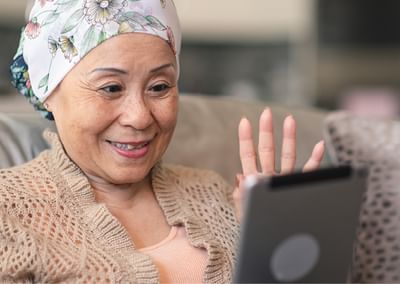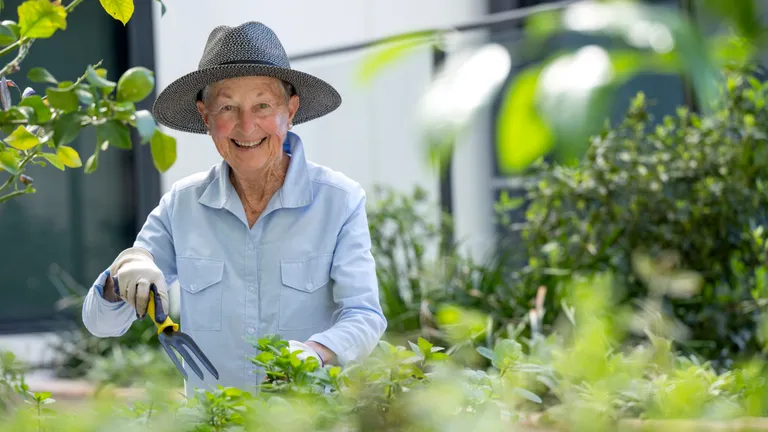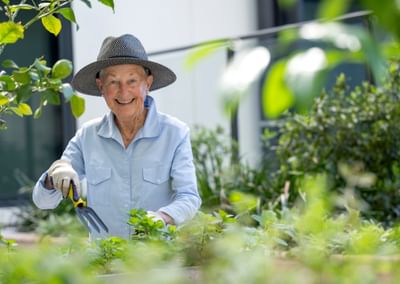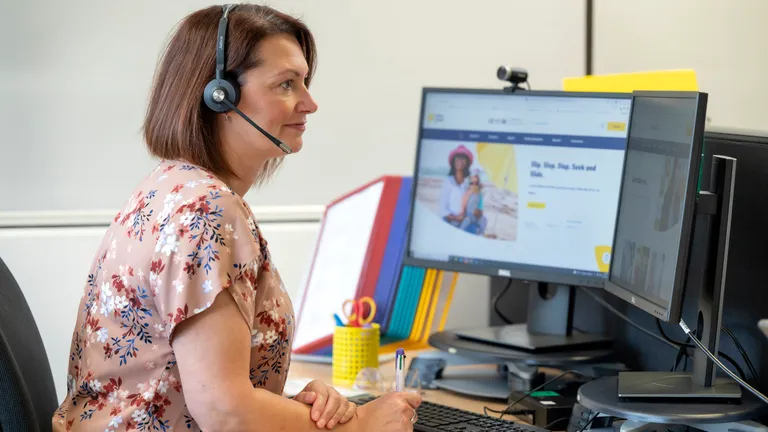What is lymphoedema?
Lymphoedema is swelling (oedema) that develops when lymph fluid builds up in the tissues under the skin or sometimes deeper in the abdomen (belly) and chest areas. This happens when the lymphatic system is not working properly. It usually occurs in an arm or leg, but can also affect other parts of the body, such as the neck.
Lymphoedema can be either primary (when the lymphatic system has not developed properly) or secondary (when the lymphatic system is damaged). This information is only about secondary lymphoedema following treatment for cancer.
The lymphatic system
The lymphatic system is part of the immune system. It helps to protect the body from disease, get rid of waste, and drain fluid. It is a network of lymph nodes, lymph vessels and lymph fluid. White blood cells called lymphocytes are produced by lymph nodes. Lymphocytes are also produced by lymph tissue found in other parts of the body, including the spleen, bone marrow, thymus and tonsils. Lymphocytes help to protect the body against disease and infection.
Common questions about lymphoedema
When does lymphoedema develop?
Cancer or cancer treatment can damage or block the lymphatic system. When this occurs, lymph fluid doesn’t drain as it should and instead builds up in the tissues. This causes swelling.
Lymphoedema can affect people at any time – during active cancer treatment, after treatment or in remission (when the signs and symptoms of cancer reduce or disappear). Lymphoedema can occur months or years after cancer treatment. It can also develop while you’re living with advanced cancer or receiving palliative treatment. It usually develops very slowly.
What are the risk factors?
Whether or not you develop lymphoedema after treatment for cancer depends on the location of the cancer, its stage and the type of treatment. While the risk is ongoing, most people who are at risk never develop lymphoedema.
Some risk factors for lymphoedema include:
- surgery to remove lymph nodes – the more nodes removed, the greater the risk
- radiation therapy
- taxane-based chemotherapy drugs
- an infection in the at-risk limb
- carrying extra body weight (overweight or obesity)
- injury to the lymphatic system (e.g. a tumour growing near a lymph node or vessel)
- underlying primary lymphoedema
- inflammatory disorders such as arthritis
- not being able to move around easily.
How common is lymphoedema?
Lymphoedema can occur after treatment for many different cancers. There are few statistics about how common lymphoedema is after cancer treatment, and the incidence differs for each cancer type. One study estimated that lymphoedema occurs in about 20% of people treated for cancers of the vulva, vagina, ovary, uterus, cervix, breast, prostate, or melanoma.
Commonly affected areas of some cancer types
bladder cancer – genitals, legs
breast cancer – arm, hand, breast, chest, trunk
cervical cancer – genitals, legs
head and neck cancer – face, below chin and/or neck
melanoma – any part of the body, depending on the area affected by melanoma
ovarian cancer – genitals, abdomen/trunk, legs
prostate cancer – genitals, abdomen/trunk, legs
uterine cancer – genitals, abdomen/trunk, legs
vulvar or vaginal cancer – genitals, abdomen/trunk, legs
What is early intervention?
Finding lymphoedema before you notice any signs can reduce the risk of developing swelling. If you are at risk of lymphoedema, ask your treatment team if regular screening check-ups are recommended for you and available near where you live. Early detection and early intervention using education, compression garments and exercise helps to reduce the impact of lymphoedema.
What are the early warning signs?
Taking action quickly can reverse mild lymphoedema and help reduce the risk of developing severe lymphoedema. As soon as you notice any warning signs in the affected area, it’s important to see your lymphoedema practitioner or doctor.
Early warning signs include:
- feeling of tightness, heaviness or fullness
- aching in the affected area
- swelling that comes and goes or is more noticeable at the end of the day (or on waking for head and neck cancer)
- tighter clothing, shoes or jewellery
- not being able to fully move the affected limb
- pitting of the skin (when gentle pressure leaves an indent on the skin).
Contact a lymphoedema practitioner if you notice any of these signs or are unsure about your risk of developing lymphoedema.
If left untreated, lymphoedema can progress and cause a range of problems, including:
- trouble moving around and doing usual activities
- discomfort and sometimes pain
- difficulty fitting into clothes or shoes
- an increased risk of infections
- further hardening of the skin
- lymph fluid leaking from the skin (lymphorrhoea)
- very rarely, the development of angiosarcoma, a type of soft tissue cancer.
"My experience is that lymphoedema is very manageable if you notice the signs early.” Susanne
How to reduce your risk of developing lymphoedema
The risk of lymphoedema varies depending on the type of cancer, its stage and its treatment. Your doctor will talk to you about your risk. There are several things you can do to help reduce the risk of developing lymphoedema. These suggestions are also useful for people living with lymphoedema. If you notice changes in the affected part of your body, see your doctor, lymphoedema practitioner or nurse immediately.
Exercise regularly
- Keep physically active to help the lymph fluid flow. Any regular exercise (e.g. swimming, yoga, cycling or walking) is helpful, as are activities like gardening and housework.
- Doing strength (resistance) training is usually okay. Increase the weight and intensity gradually, and be guided by how your limb responds. Cool down slowly.
- Start any exercise slowly and build up gradually.
- Visit an accredited exercise physiologist or physiotherapist to develop an exercise program.
Download our booklet ‘Exercise for People Living with Cancer’
Maintain a healthy body weight
- Aim to stay in a healthy weight range. Carrying extra weight can be a risk factor for developing lymphoedema. If you are carrying extra weight, talk to your doctor about how to achieve a healthy weight.
- Eat a variety of nutritious foods each day.
Download our booklet ‘Nutrition for People Living with Cancer’
Move normally but avoid pressure and strain
- Don’t try to protect the affected limb by limiting its movement – using the limb normally will keep the lymph fluid flowing.
- Avoid heavy lifting that may result in strain or injury, such as moving heavy boxes or furniture. This does not include exercise or strength (resistance) training.
- Avoid pressure from clothing, underwear and jewellery.
Look after your skin
- Keep your skin clean. Wash with a pH-neutral soap and avoid scented products.
- Moisturise your skin every day. Dry and irritated skin is more likely to tear and break.
- Protect your skin and cuticles – don’t cut your cuticles during nail care; wear gloves for gardening, housework and handling pets; use insect repellent to prevent insect bites; avoid cutting or burning your skin when cooking; wear protective clothing, a broad-brimmed hat, sunglasses and sunscreen when in the sun.
- Seek urgent medical help if you notice redness, heat, pain or think you may have a skin infection.
Tips for travelling
Travel – by plane, train, bus or car – has not been shown to increase the risk of lymphoedema. Even so, you may choose to take simple precautions while travelling like wearing loose-fitting clothing, moving regularly and drinking plenty of water. People with lymphoedema, or who have had lymph nodes removed as part of cancer treatment, may be advised to wear a compression garment during long-distance travel. Talk to your lymphoedema practitioner or doctor before you go.
Diagnosis and staging
Your lymphoedema practitioner or another health professional will ask about your medical history, and check the level of swelling and any pitting, thickening or damage to the skin. The size of the affected limb will be compared to the other limb, and any differences will be assessed.
This is done in different ways:
- using a tape measure to measure the distance around the limb (circumference)
- using a device with a painless, low-frequency electric charge (bioimpedance spectroscopy) to calculate the amount of fluid
- using a high-frequency, low-power electromagnetic wave to measure the water content of the tissues
- taking photos of more difficult to measure areas, such as the head, neck, trunk, breast and genitals
- using a doppler ultrasound to rule out a blood clot
- less commonly, using magnetic resonance imaging (MRI), computerised tomography (CT) or an ultrasound to show extra fluid or fat in tissues or tissue changes
- using special imaging procedures – such as lymphoscintigraphy or indocyanine green (ICG) fluorescent lymphography – to see if there are problems with lymph fluid flow.
If lymphoedema is diagnosed, it will be staged from 0 (least severe) to 3 (most severe). All stages of lymphoedema need ongoing treatment and care.
Who will provide treatment?
Lymphoedema usually requires care from a range of health professionals including a qualified lymphoedema practitioner, doctors and allied health professionals (e.g. dietitian, exercise physiologist).
Lymphoedema practitioners – may be an occupational therapist, physiotherapist, massage therapist (may be called a myotherapist), podiatrist, speech therapist or nurse with specialist training in managing lymphoedema. Lymphoedema practitioners assess people with lymphoedema, develop treatment plans, prescribe compression garments, and provide ongoing treatment and care. They may work as part of a lymphoedema service in a public or private hospital or in private practice.
Doctors – your general practitioner (GP), surgeon or oncologist may diagnose the condition, coordinate your treatment plan and refer you to a lymphoedema practitioner. If you develop a skin infection (cellulitis), your GP will help to manage this.
How to find a lymphoedema practitioner
You can ask your GP or specialist to refer you to a lymphoedema practitioner for assessment, or you may find a practitioner yourself. The Australasian Lymphology Association has an online register of lymphoedema practitioners. If you live in a rural or regional area, you may need to travel to visit a lymphoedema practitioner or some clinics provide telehealth consultations.
Treatment and management
The aim of treatment is to help the flow of lymph fluid through the affected area. This will help reduce swelling and improve the health of the swollen tissue. Reducing the swelling will lower your risk of infection, make movement easier and more comfortable, and improve your wellbeing.
A lymphoedema practitioner will work with you to develop a treatment plan based on the severity of swelling (the stage) and any other health conditions you may have.
Mild lymphoedema (stages 0–1) is usually managed with skin care, exercise and compression therapy.
Massage therapy may also be used for stage 1 lymphoedema. Moderate or severe lymphoedema (stages 2–3) usually needs complex lymphoedema therapy (CLT). Less commonly, you may have laser treatment, lymph taping and surgery.
Skin care
It is important to keep your skin in good condition to prevent infections.
Exercise
Any physical activity – such as walking and/or strength (resistance) training – can help reduce the severity of lymphoedema. Water-based exercise can be helpful as it provides support and compression.
Aim for about 150 minutes of moderate exercise each week. Exercise may need to be modified if certain movements make symptoms worse. If you usually wear a compression garment, you should also wear it while exercising. A lymphoedema practitioner, exercise physiologist or physiotherapist can design an exercise program for you.
Download our booklet ‘Exercise for People Living with Cancer’
Massage therapy
Manual lymphatic drainage (MLD) – This is a specialised type of massage to the affected area that moves fluid towards lymph nodes that are draining normally. It must be performed by a lymphoedema practitioner.
Simple lymphatic drainage (SLD) – This is a simplified form of MLD, which your lymphoedema practitioner may teach you or a carer to do daily.
Research into how well MLD and SLD work in managing lymphoedema is ongoing.
Compression therapy
Compression therapy involves applying different levels of pressure to the affected area. Bandages and wraps and compression garments are most commonly used in compression therapy. Intermittent pneumatic compression may also be used. Compression can reduce and contain swelling, and soften thickened tissue.
Compression needs to be used on an ongoing basis; if stopped, the swelling will usually return.
Who can have compression therapy? – Not everyone with lymphoedema can have compression therapy. It can be dangerous for people with a range of conditions, such as uncontrolled congestive heart failure or uncontrolled high blood pressure.
Only wear a garment if it is recommended by your lymphoedema practitioner or doctor; poorly-fitting garments can make lymphoedema worse. Your lymphoedema practitioner will show you how to put on and take off the garment, and recommend aids and techniques if you find this difficult.
Types of compression therapy
Compression bandages and wraps
- used to get the fluid moving, remove the fluid and reduce swelling
- applied by a trained lymphoedema practitioner
- often used in intensive treatment (called CLT)
- uses non-elastic bandages or wraps and secured with Velcro
- changed regularly as the swelling reduces
- may need to be worn day and night (24 hours); your lymphoedema practitioner will advise you
Compression garments
- used to maintain improvements
- fitted by a lymphoedema practitioner to ensure correct fit and pressure gradient
- self-applied (you put them on yourself)
- worn during the day as soon as possible after getting up; you may wear a lighter garment at night
- may be used as a standalone treatment, but often used as a part of CLT
- can be off-the-shelf or custom-made
- may be a stocking (leg), sleeve (arm), glove/gauntlet (hand), bra/singlet/vest (breast or chest), leotard (trunk), shorts with padding (genitals), scrotal supports (genitals), or head and neck garment
- available in different skin tones
- ask your lymphoedema practitioner whether you should wear a garment during travel
Intermittent pneumatic compression (often called a pump) – A compression pump may be used for people who find it difficult to move around or to perform SLD. This machine inflates and deflates a plastic garment placed around the affected area to stimulate lymphatic fluid. You may need to have MLD or SLD before using the pump.
The pump can be used at home but it’s important that a trained practitioner shows you how to use the pump and adjust the pressure to your needs. You can buy or hire a pump to use at home.
Complex lymphoedema therapy (CLT)
For people with moderate-to-severe lymphoedema, CLT can be used to help control the symptoms. It is done in 2 phases: a treatment phase and a maintenance phase. During the treatment phase, a lymphoedema practitioner provides a combination of regular skin care, exercises, manual lymphatic drainage (MLD) and compression bandaging.
It may take a few days or up to several weeks to reduce the swelling and then you will be fitted with a compression garment. You will also be taught how to manage the lymphoedema yourself, or with the help of a partner or carer.
During the maintenance phase, you will continue to look after your skin and exercise regularly. You will also continue to wear the compression garments prescribed by your practitioner to help maintain the improvements made in the treatment phase.
It is recommended that you see your lymphoedema practitioner for regular reviews, but this may vary depending on your circumstances.
Laser treatment
Low-level laser therapy (called photobiomodulation or PBM) may be used to target cells in the lymphatic system. This treatment may reduce the volume of lymph fluid in the affected area, any thickening of the skin and any pain.
Your lymphoedema practitioner will use a handheld device or a larger scanner to apply infrared light beams to the affected area. You will not feel any heat during the procedure.
There is some evidence that laser treatment works well when used with lymphatic drainage and compression therapy. Research is still continuing into this treatment.
Lymph taping
Some early research suggests that a special, elasticised tape (called kinesiology tape) can help lymph fluid drain from the affected area.
The tape is different from strapping tape and is applied by a lymphoedema practitioner. They will tell you whether lymph taping may be helpful for you.
Surgery
In most cases, lymphoedema can be managed with CLT, but surgery may be an option for some people when lymphoedema doesn’t respond to other treatments or you are not satisfied with standard treatment. Special types of surgery can be used before the lymphatic system becomes badly affected and the tissues have changed a lot. Ask your GP or surgeon if surgery may be a option for you.
To work out whether surgery is the right option for you, your treatment team will consider the extent of the swelling, how often you get infections, and your general health. It is best to have surgery for lymphoedema in a specialist centre.
As with all surgery, there are risks involved. These include scarring, nerve damage, blood clots, infection, loss of mobility in the affected area, further damage to the lymphatic system, and continuing lymphoedema. Most people still need to wear a compression garment after surgery.
Examples of surgery for lymphoedema include:
Liposuction – In some people, the lymphoedema fluid changes into fatty tissue, but CLT doesn’t reduce the fat. Liposuction can remove fat from under the skin of the affected area and the limb will look smaller. It should only be considered when CLT cannot reduce the swelling.
Liposuction will not cure lymphoedema, but it can make it easier to wear normal clothes and be active.
Liposuction can also reduce the risk of infection. After liposuction, it’s essential to continue wearing a compression garment 24 hours a day or as advised.
Lymphovenous anastomosis (LVA) – This uses microsurgery to repair or create a new pathway for the lymph fluid to drain out of the area to a small vein or another lymph vessel that is working well. This technique appears to work better for people with early-stage lymphoedema. Further research on the long-term effectiveness of this type of surgery is needed.
Lymph node transfer (LNT) – This involves moving healthy lymph nodes from an unaffected area of the body to the affected limb. More research is needed to work out whether this technique is effective in the long term.
Medicines
There is no proven drug treatment for lymphoedema and some medicines may make it worse. There is little evidence to support taking naturopathic medicines or supplements such as selenium to help reduce lymphoedema symptoms. Talk to your doctor before taking any supplements or medicines to ensure they are not harmful.
Help paying for treatment
Treatment for lymphoedema – including seeing lymphoedema practitioners and buying compression garments – can be expensive. There are options to help with these costs:
- If your GP refers you to a lymphoedema practitioner as part of a chronic disease management plan, you may be eligible for a Medicare rebate for up to 5 visits a year.
- Compression garment subsidy schemes are run by all state and territory governments. There are also some federal subsidies through the Department of Veterans’ Affairs. These schemes cover some, or all, of the cost of compression garments. People with permanent and significant disability may be eligible for support through the National Disability Insurance Scheme. For more information, visit the Australasian Lymphology Association.
- If you have private health insurance, check with your provider whether your policy covers lymphoedema therapy and compression garments.
Caring for the affected area
If possible, you should:
- keep cool in summer as the heat may make swelling worse – have cold showers, stay indoors during the hottest part of the day, avoid sunburn, and drink plenty of water
- wear clothing and jewellery that fits well and doesn’t put pressure on the affected area
- tell health professionals that you have lymphoedema (or are at risk of lymphoedema) before having blood taken, injections, blood pressure monitoring or other procedures – it may be safe to use the affected arm, but your health professional will discuss this with you.
Recognising and managing infections
Who is at risk – People with, or at risk of, lymphoedema are at higher risk of getting a serious
skin infection known as cellulitis.
How an infection starts – If lymph fluid can’t drain properly, bacteria can multiply and an infection may start in the affected area or sometimes more generally in the body. The high amount of protein in lymph fluid also makes it a place where bacteria is more likely to grow.
Signs of cellulitis – Redness, painful swelling, warm skin, fever, and feeling generally unwell. It may help to mark the red area with a soft marker and check for spreading.
When to start treatment – See your doctor immediately, as you may need antibiotics. Treating symptoms early will help the recovery from cellulitis. Having one episode of cellulitis increases the risk of further infections.
Taking antibiotics – It’s important to follow your doctor’s instructions when taking antibiotics – you may need to take antibiotics for longer periods of time if cellulitis develops in an area affected by, or at risk of, lymphoedema. If you have developed cellulitis several times, your doctor may give you an antibiotic prescription to keep on hand, so you can start on antibiotics as soon as you notice symptoms.
For more information, visit the Australasian Lymphology Association.
Coping with lymphoedema
Lymphoedema can affect your body and mind, so it’s important to look after your wellbeing. Having lymphoedema can affect how you feel about yourself (self-esteem) in several ways, including:
- Body image – You may feel self-conscious about the swelling and how you look. Or you may have trouble finding suitable clothes and footwear, which can also affect how you feel about yourself.
- Sexuality and intimacy – You may lose interest in sex, or you may feel that any visible changes make you less attractive and worry others will reject you.
- Anxiety and depression – You may feel overwhelmed by the ongoing treatment and by the permanent reminder of having had cancer.
- Social isolation – You may avoid work and social activities because of concern about how you look or because you find it difficult to move around.
Give yourself time to get used to any physical changes. You may experience a variety of emotions, including anger, anxiety and resentment. Everyone has their own way of coping with their emotions. Some people find it helpful to talk with family and friends, while others seek professional help from a counsellor or psychologist. You may find it helpful to join a support group to talk with other people who are dealing with lymphoedema.







